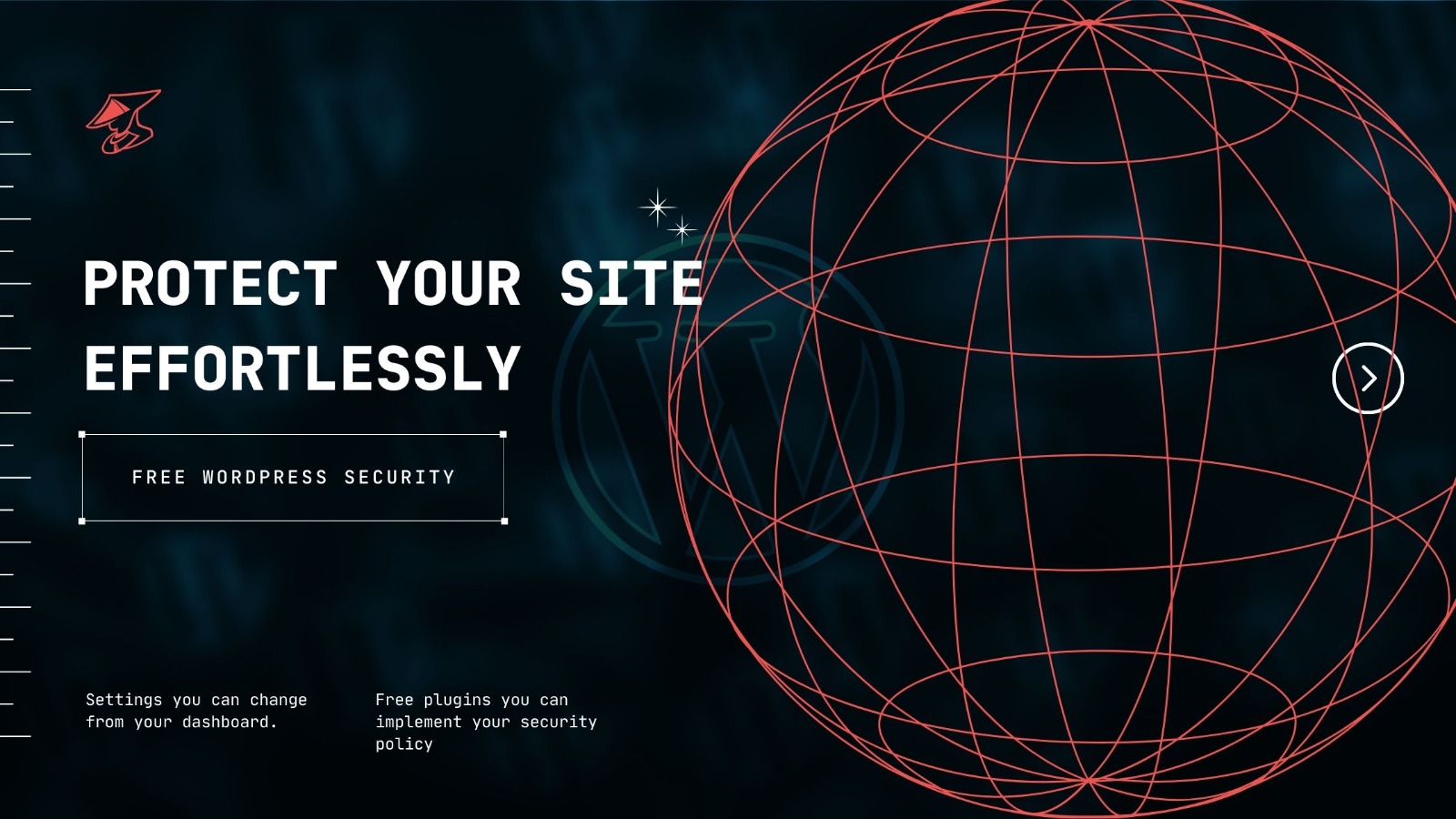Free WordPress Security Mastery: Protect Your Site Effortlessly
by Ben Brown | 01/24/2024

by Ben Brown | 01/24/2024

In the digital age, website security is paramount, especially for WordPress users. As a leading content management system, WordPress powers millions of websites, making it a frequent target for cyber threats. However, fortifying your WordPress site doesn't have to come with a hefty price tag. This comprehensive guide, will walk you through securing your WordPress website using free, effective tools and plugins.
Before diving into the tools, it's essential to understand why WordPress security is crucial. A secure website protects not only your data but also your visitors' information from cyber threats like hacking, data theft, and malware.
The foundation of website security begins with your hosting provider. Opt for a provider that offers robust security features even in their basic plans. Features to look for include regular backups, firewall protection, and active monitoring.
Keep your WordPress core, themes, and plugins updated. Updates often include security patches for vulnerabilities discovered in previous versions.
Log in to your WordPress Dashboard.
Navigate to ‘Dashboard’ > ‘Updates’.
Select ‘Update Now’ if a new WordPress version is available.
Update your plugins and themes from the same page.
Avoid common usernames like ‘admin’ and use strong, unique passwords. Consider using a password manager to generate and store your passwords securely.
Jetpack: An All-in-One Solution Jetpack, developed by WordPress experts, offers various features to enhance your website's security.
Go to ‘Plugins’ > ‘Add New’.
Search for ‘Jetpack’ and click ‘Install Now’.
Once installed, click ‘Activate’.
• Brute Force Attack Protection: Jetpack blocks suspicious login attempts.
• Downtime Monitoring: Receive alerts if your site goes down.
• Secure Login: With optional two-factor authentication.
iThemes Security is another robust plugin offering over 30 ways to protect your site.
In your WordPress dashboard, navigate to ‘Plugins’ > ‘Add New’.
Search for ‘iThemes Security’.
Install and activate it.
• File Change Detection: Alerts you to unexpected changes in your site's files.
• 404 Detection: Locks out users who repeatedly visit non-existent pages.
Regular backups are your safety net. Plugins like UpdraftPlus enable you to schedule automatic backups.
Install and activate UpdraftPlus from the ‘Plugins’ section.
Go to ‘Settings’ > ‘UpdraftPlus Backups’.
Set up your backup schedule and remote storage options.
Limit the number of login attempts to prevent brute force attacks. You can do this through Jetpack or other dedicated plugins.
Prevent direct file editing from your WordPress dashboard for added security.
Access your site’s wp-config.php file.
Add the line define('DISALLOW_FILE_EDIT', true);.
Ensure your site is running over HTTPS, which encrypts data transferred between your site and your users. You can get a free SSL certificate from Let's Encrypt.
If your hosting uses cPanel, here are extra measures to secure your WordPress site:
1. Use cPanel's Security Features: Utilize features like ‘Password Protect Directories’ and ‘IP Address Deny Manager’.
2. Regularly Scan for Malware: Use cPanel’s built-in virus scanner to check for malware.
3. Update PHP Version: Keep your PHP version up to date through cPanel for better security and performance.
Securing your WordPress website doesn't require a big budget. With the right practices and free tools like Jetpack, iThemes Security, and backup plugins, you can significantly enhance your site's security. Remember, consistent updates, strong passwords, and regular backups are the cornerstones of a secure WordPress site. Stay vigilant and keep your digital presence safe and secure.
Start scanning your projects for free. You will get a free breakdown of your security status. Start securing your future now.
Get started